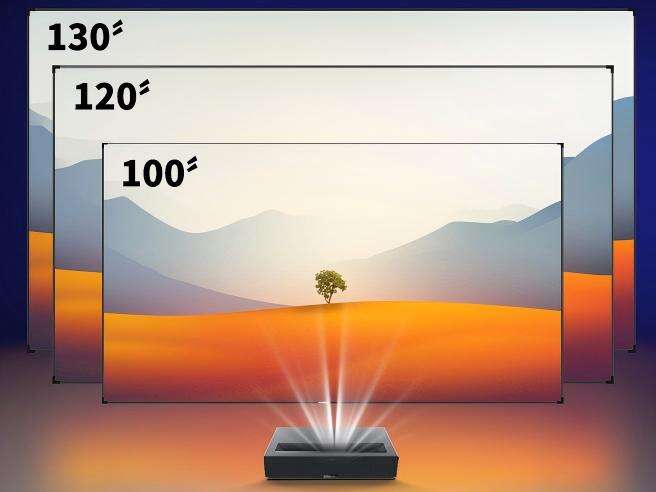ALR (Орточо жарыкты чегерүүчү) экрандары жана күндүзгү жарыкта да таң калыштуу визуалдык материалдарды берүү мүмкүнчүлүгүнө ээ болгон жогорку технологиялуу Френель панелдеринин айланасында көп шумка чыкса,
Классикалык мат белый экран өткөн заматтын барабыбы?
Жок болгон жок.
Чындыгында, мат белый проекциялык экрандар үй кинотеатрларында жана профессионалдык AV баптоолордо иштетилүүчү сенсиз каражат жана популярдуу тандалгы болуп кала берет.
Бул жыл сиздин кинотеатр системиңизге алардын ордун басууга тийиштүү себептер:
“Темното жарык менен согушконуңуз керек эмес — сүрөттү гана унаңыз.”
Эгерде сиздин топтом аракетсиз шторгдору же өзгөртүлгөн жарык менен жабдылган болсо, мат белый экран сиздин эң жакшы достуңуз болот. Ал жарыкты табигый түрдө кайтарып берет, жогорку ачыктык, аныктык жана так түстөрдү көрсөтөт — кошумча кургак керек эмес.
“Ар бир орундан жакшы көрүнүш.”
ALR же Френель беттерине караганда, көбүнчө кичине «шаарман нүктө» чектейт, мат белый экрандар кенен горизонталдык бурчтун ээси болгондуктан сапаттуу сүрөттү сактайт. Бул топто көрүү, той-жайлар же кенен орун алууну иштетүү үчүн жакшы.
“Кереги жерде акча тоскоолдо — ал жерге инвестиция киргизиңиз.”
Матдагы ак экрандар, адатта, арзаныраак турат, бирок сапаты төмөн деген эмес. Көптөгөн профессионалдык деңгээлдеги экрандар матдагы ак материалдарды колдонот, атайын караңгы бөлмөлөргө орнотуу үчүн. Бул жогорку сапаттуу иштөөнү каражатты көп чыгымдоо болбостон алганга тийиштүү тандоо.
«Бир экран, чексиз проектор мүмкүнчүлүктөрү»
Сиз узун линзалуу, кыска линзалуу же компакттүү LED проекторду колдосоңуз да, матдагы ак материалдар бирдей иштейт. Линзанын бурчу, орнотуу же багытталган жарык шарттары тууралуу ой жүгүртүү зарыл эмес — ал жөн гана иштейт.
«Түстөрдү так көрүңүз — алар кандай болуш керек болсо, ошондой болуп чыгат»
Нейтралдуу алат (адатта 1.0), матдагы ак экрандар жарыкты бирдей чагылдырып, түстөрдүн бүтүндүгүн сактайт. Бул түстөрдүн чындыгына баса белгиленген колдонуучулар үчүн идеалдуу — кооздук түзүүчүлөр, киносүйгүштөр жана профессионалдар.
«Таза, ачык бейне — жакындан көргөндө деле»
Матдагы ак жүзү жарыкты жумшак таратса, бул табигый эле улуттук нерсе болгон спекл көрүнбөйт - айрым UST же лазер проекторлору менен. Жогорку чегинде версиялар мүмкүн болсо да өзгөчө покрытие же микрокөрүнүштөрдү колдонуп, интерференциялык сүрөттү азайтууга болот.
Эгерде бөлмөңүз көп жарыкка ээ болуп, ал контролдоо мүмкүн эмес болсо - мисалы, күндүзү чоң терезелери бар жашоо бөлмөсүндө - анда ALR же CLR экрандар үчүн жакшыраак опция болуп саналат. Бирок караңгы же контролдоого жарылуучу жарык ортосунда матдагы ак жүзү туруктуу маани жана сапаттуу сүрөт берет.
Жыйынтык?
Матдагы ак экрандар жаркыраган же жаңы болбосо да, алардын арты калган эмес. Туура келген жер үчүн алар сенсиздин, так жана кеңири колдонуучу тандоо болуп кала берет.
